The charms of East Indian community churches in coastal villages from Madh to Bainel
East Indian community traces its roots to the 15th -16th century when the Portuguese took control over Salsette island and the seven islands of Bombay. From the first arrival of the Portuguese on Indian shores in 1498 and on Bombay shores in 1509, they encouraged intermarriages with local inhabitants. Dominicans, Franciscans, Jesuits spearheaded the evangelization of the local community and built churches and monasteries. From Bandra to Vasai, the Bombay coastline is dotted with small fishing villages which had come under Portuguese influence and today are dominated by East Indian Christians though other communities like Kunbi, Agri, Bhandari community who were also the original inhabitants do reside in these villages. The influence of the Portuguese can be still in architecture, cuisines, language as well as churches.
I have been fascinated with old churches, village square cross as well as grottos that we see in villages where East Indian communities reside. For this particular post, My area of interest is from Madh island (separated by Malad creek from mainland Versova) to Uttan Dongri - Bhayander (separated from Vasai by Vasai creek). Churches that dot the villages from Madh to Bainel have this old-world charm, something appealing and attractive, They have a lot of Portuguese influence on their architecture like typical facade, projecting cornices, bell towers, and stucco works. Another interesting feature is some of these churches also have gravestones on the courtyard floor or church floor that dates back a few centuries and are written in the Portuguese language.
The picturesque fishing village of Madh is today more popular for its beachside resorts and bungalows used mainly for shooting movies and TV serials. The village is home to an old church "Church of Our lady of Sea" locally known as Darya Mata church built-in 1905. The Portuguese church has a gable facade with a two-tiered arched opening, projecting cornices, stucco work, and a bell bay.
Fishing is the main activity in the village which is reflected in a huge mural on the front facade of the church where a fishing boat blessed by Mother Mary and infant Jesus is painted. The interior wall over the altar also has a wall mural showing the different activities like fishing, farming, and the daily life of the villagers. Mother Mary with Infant Jesus sits on the altar.
Erangal village is one of the oldest settlements. The village is predominantly a Bhandari community stronghold but also has East Indians and other communities residing in the village. The "church of St Bonaventure" is one of the oldest church built-in 1575. The church has a fortress-like structure with battlements lining the pediment.
The church wall has a plaque that mentions that regular prayer service continued here till the Maratha invasion in 1739. In 1926 the ruined church was renovated again. The feast of "Baravi cha sunn" known locally for the 12th-century priest which is held annually for generations on the 2nd Sunday of every January is one of the most attended events when the village has a festive atmosphere.
Manori village is a protruding landmass separated from the mainland by a creek and like other neighboring villages has been inhabited since pre 16th century. The village is home to "Our lady of perpetual succour church" which was supposedly built between 1635 - 1642 but a plaque in Portuguese and in Marathi inside the church mentions about Franciscans church built in 1559 and which was destroyed in the Maratha invasion of 1739. The church was repaired in 1815 and 1912.
This is a typical Portuguese east-facing church having a gable facade, projecting cornices, stucco work, and a bell tower. Few 18th-century gravestones in Portuguese can be seen in church courtyard flooring.
Muddhan Pakhadi village cross stands on the main arterial road connecting Manori to Uttan. The cross dates back to 1821. Once a hamlet is now an extended part of Culvem - Gorai village, interior lanes are dotted with beautiful bungalows in Indo-Portuguese style architecture, some of which are centuries old. The crosses on the streets and grottos in the home courtyard are a common sight.
Culvem village has its own chapel "Sacred heart chapel" built-in 1859. Fr Mascarenhas who was vicar of Gorai from 1837 - 1853 is said to have built this chapel on his own land in the village. The church acts as a sub-center to the Gorai church of Holy Magi. This Portuguese church is having a shaped gable facade with arched openings, projecting cornices, stucco works, and a bell tower which is commonly seen in all the churches of the neighborhood.
Gorai church is also known as the "Holy Magi church". The church was built in 1810 with a shaped gable facade, projecting cornices, stucco works, and bell bay. The parish was once the biggest and served villages from Manori to Uttan till the 17th century after which other parish started becoming independent.
Gorai cross stands on the tri-junction of the main arterial road connecting Uttan to Manori and was erected in 1921. Another cross stands just ahead of Gorai jetty erected by a family from Ambolee village in 1937 on the coronation day of King-Emperor Geroge V.
Infant Jesus Chapel, some three-quarters of a mile on the way towards Uttan from Gorai chowk today is home to a small but beautiful chapel on banks of Vairala lake. The chapel hidden amidst nature is just off the main road. A small grotto is placed in the middle of the lake which is accessible by a narrow bridge from the chapel courtyard.
Next to the chapel are the ruins of the original Holy Magi church. What remains today is just the stone masonry walls of the 15th-century church. The church was built by Franciscans in 1595 but during the 17th century Maratha war with the Portuguese, it was badly damaged and fell into ruins thereon.
Uttan Bhate Bander shrine: From Uttan chowk, a narrow road goes through the fishing village and ends at a shrine dedicated to "Our lady of Velankanni". The shrine is located in a very picturesque location close to the Arabian sea. Though the shrine has been built in the late '90s, it is hugely popular especially during Sundays, on Mother Mary feast, and during Christmas festivals.
Close to the shrine, on top of the hill is the statue of our lady of good health which is accessible by series of steps. From the top one can get a panoramic view of the surroundings which is quite mesmerizing.
In Uttan village "Church of Our lady of Sea" is the last church to be built by the Franciscans in the 17th century. As per records, the church must have been built between 1634-1642. The church was the only parish that overlooked the villages of Uttan and Dongri before other parish got independent. The church architecture shows gable shaped facade, projecting cornices, and bell tower. The priest residence attached to the church as well as many neighborhood houses show Portuguese influence in the architecture.
In Uttan - Pali village, "Our lady of Lourdes" was built in 1951, As per records of 1901, it appears as a chapel in the Catholic directory. The church was extended twice, once in 1925 and then in 1974. The church has gable shaped facade, projecting cornices, two bell bays. There are four arched entrances and a long prayer hall. The altar is beautiful and has an idol of Mother Mary.
Christ the King stands outside the church in a fishing boat as well as Mother Mary statue inside the church, both influenced by the fishing community in the neighborhood.
In Uttan - Chowk village stands the church of "St Andrews" on a small hill. The church is the newest to be built in 2000. Prior to it, there was a small chapel as early as 1950 known as Dongar Mauli. The altar has an idol of Christ and is beautifully decorated. The church has its own burial ground located across the road and also runs a school by the same name.
Uttan Dongri is home to two Portuguese-era churches built by Jesuits in the 16th century. Our lady of Bethlehem was built in 1613 and is known locally as "Belan Mauli". The church is located in beautiful village surroundings untouched by urbanization. This church was once the largest on Dharavi island and could hold a congregation of 900 people. The facade has three arched doorways and two bell bays. Projecting cornices look beautiful on the front facade.
On the sides of the outer church wall, there is an ancient stone with the marking "IHS" which in Latin means "Iesus Hominum Salvator" or Jesus the savior of men. This stone was found near a water tank and there is a belief that there could have been another Jesuist church in the valley which may have been destroyed during the Maratha invasion of 1739.
Another ancient stone in the Portuguese language with a date lies on the outer walls. The altar and the interiors are both beautiful.
Apart from the beautiful church, The Parish house is also equally beautiful.
Glimpses of church interiors.
Dongri hills lie just opposite Vasai separated by the Vasai creek and hence the place saw the most fierce battle between Marathas and Portuguese in 1739 but the Dongri church escaped much damage and after the war, a secular clergy was installed to overlook the parish which covered the villages the Dongri, Tarodi, and Palli. The church can be accessed by steps from the Dongri - Uttan road as well as from the village.
Another church in Dongri village is known as Our lady of Fatima Church or Ermitri church or the hills of the hermitage. It is said that this was a hermitage built by Jesuit Fr. Francisco Azavedo after he bought the hills of Dongri in the 16th century. There are 80-foot ruins of a hermitage that can still be seen.
After the Maratha war in 1739, the church lay in ruins for over 200 years. In 1950 when the idol of Fatima from Portugal was taken across the world, Devotions were invoked when the Fatima statue reached the Dongri hills. A parishioner donated the statue of Lady Fatima which was installed in the ruins on the feast day and since then 18th October is celebrated as Fatima feast every year.
The church can be reached by a steep climb of 200 steps surrounded by nature. There are 12 station cross installed at regular intervals on the steps up to the hermitage hills which were once in Pali hills of Bandra on the way to the private chapel of Our lady of Calvery. These crosses were donated by the Fonseca family and were transferred here in 1965.
From the summit, one can get a full view of the Arabian Sea on the west and north. Bassein or Vasai and Vasai fort lies in the North and can be seen on a clear day.
Our Lady of Nazareth church of Bainel (Bhayander) was built between 1575- 1578. A person named Balthasar Gomes who owned the entire village of Bhayander donated the land and erected it at his own expense. The church was rebuilt in 1866 and extended in 1890. After the Maratha war in the 17th century, the Franciscans left this parish and secular clergy took over the parish.
The front facade of the church is quite different as compared to other churches and has projecting cornices but no bell tower or gable-shaped facade. There is a very beautiful cross in the church compound and the priest house is one of the most beautiful structures in the vicinity surrounded by coconut trees.
These tiny villages on the western coast of Mumbai (Yes! they still retain the village atmosphere) hold treasures of the past. Apart from churches or village square crosses, these village precincts hold significant heritage value. Urbanization though has touched these village shores but it has not completely swept them. So do put on your walking shoes or peddle down the narrow lanes of what can be termed as our very own "Mini Goa" in the backyard.






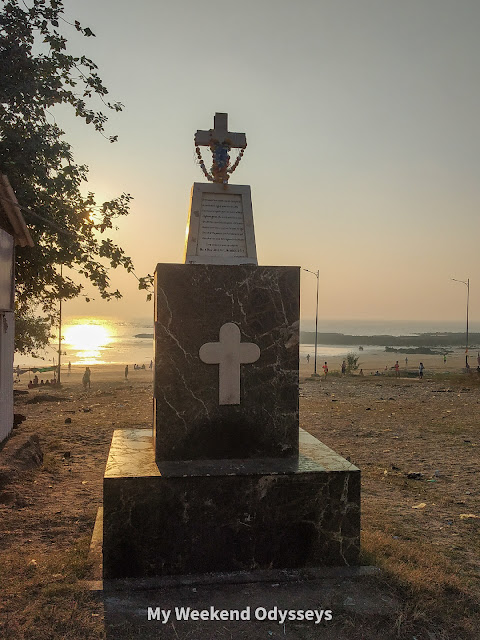
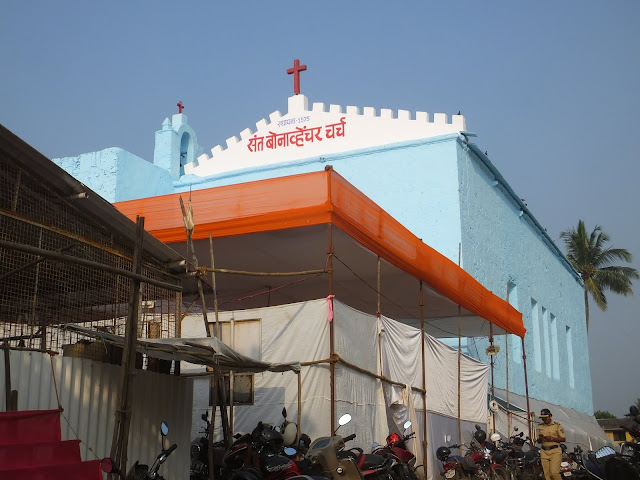

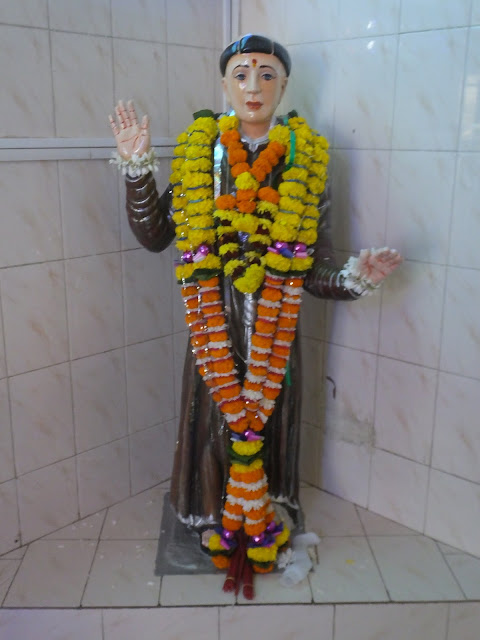














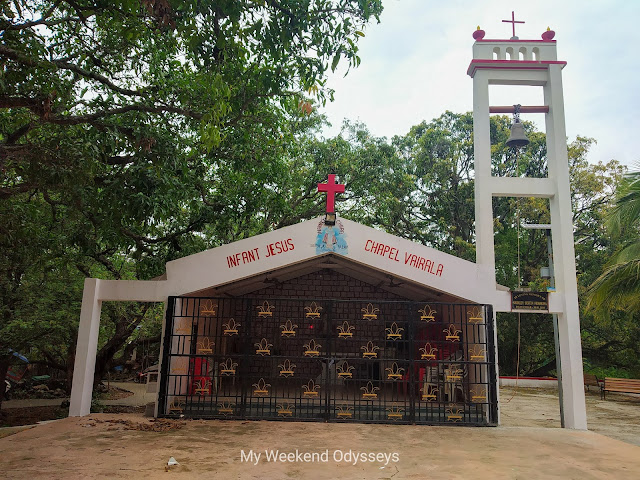


















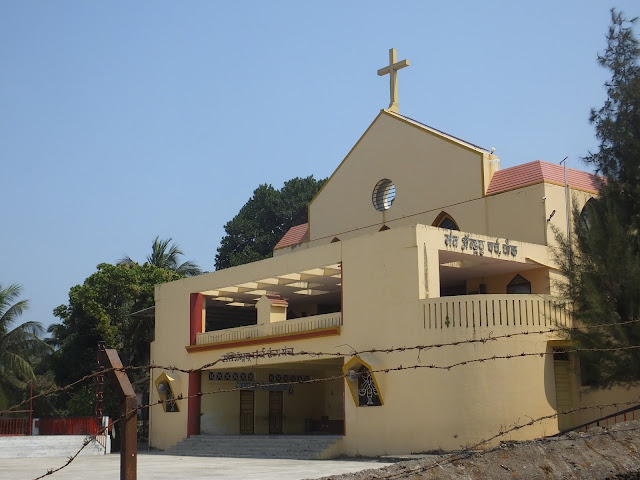
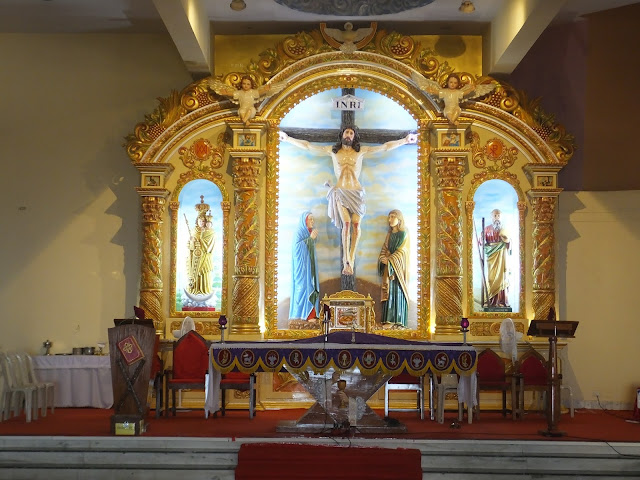






























Very informative post with lovely pictures too. Have been to some of these churches but not all, most old churches are on my wish list and hopefully some day soon I'll be able to visit them all. Till then I'll have to keep looking at your post for inspiring me to see some more churches soon.
ReplyDeleteThank you Aadil Sir for your kind words. In this post I have covered all churches from Madh to Bhayander west (at least that is my assumption !!) except two orthodox protestant churches one in Madh and other is near Rai village but they are fairly new and not heritage.
DeleteI'm looking for St Gonsalo church or chapel in India. Do you know any? Thank you!
ReplyDeletehttps://g.co/kgs/Z99TkL
Delete